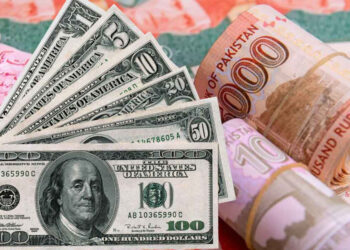Interestingly, India’s health minister, in February, declared that the country was “in the endgame” in the battle against the coronavirus. However, in the past week, India has seen a surge of coronavirus cases, with the daily number now surpassing three and thirty thousand.
The second wave of COVID-19 in India has proven to be more challenging and aggressive than the first wave of the pandemic. India, which has more vaccine-manufacturing capacity than any country on earth, has exported tens of millions of vaccine doses, but now facing shortages.
Why is COVID spreading rapidly?
Election rallies and the Kumbh Mela in Haridwar appear to have compromised efforts to curb the spread of COVID-19. These two events emerged as super spreaders with daily cases seeing a nearly 6,000 percent increase.
In West Bengal, where polling for the sixth phase ended on Thursday, the state registered its highest single-day spike of 11,948 COVID-19 cases. COVID-19 cases have seen a jump of 3,489 percent in just seven weeks in the state.
Over 48.51 lakh people thronged Haridwar, an important pilgrimage place for the Hindus, for Kumbh Snan, which occurs once in 12 years. Despite their best efforts, the police could not impose the SOPs on the two major bathing days.
Who is to blame?
The alarming surge in COVID-19 cases in India can be blamed largely on Prime Minister Narendra Modi and Home Minister Amit Shah, and their reckless messaging through overcrowded, unmasked election rallies as well as the Kumbh Mela. With the two BJP leaders addressing ‘massive’ rallies, an illusion of normality was created.
Of course, all political rallies are problematic. Politicians across party lines need to share the blame. It is rather facile for a prime minister like Modi with unparalleled popularity across the country to address people on his monthly radio talk show.
However, contrast this with Modi addressing thousands of people crammed into rally tents, sitting close to each other, so many without masks and say “amazing atmosphere” and not utter a word about Covid-safe behaviour.
Virus loves crowds
The virus loves crowds, as the saying goes, but it particularly adores crowds that don’t bother with masks or physical distancing. The crowds at mega rallies in Assam or West Bengal suggest that both masks and distancing have become unfashionable.
The crowds can and do happen—and they haven’t always been predictive of the spread of the virus. It’s understandable that people might be confused about crowds. Experts say that it’s important to keep in mind that crowds can be sources of transmission, even if transmission doesn’t always occur.
Based on what we know about COVID-19, crowds would be hot spots for viral transmission. The virus is thought to spread mainly between people who are in close contact with each other, specifically through respiratory droplets produced when an infected person coughs, sneezes, or talks.
India’s Oxygen Crisis
In view of the scarcity, the demand for companies that produce medical oxygen has increased on the domestic market. Unlisted oxygen firms have surged at least 47 percent in April despite rising uncertainty and weakness in the country’s broader market.
It seems that investors want to cash in on companies that manufacture medical oxygen to earn good profits till the scarcity lasts. In the middle of the shortage, prices of oxygen cylinders in many parts of the country have more than doubled.
Oxygen has emerged as a key necessity during the second wave of the Covid-19 pandemic, with infections causing shortness of breath among more patients.
Final words
Modi takes great pride in the power of his messaging. He has wonderfully developed the craft of making large sections of voters believe in him, listen to him, and do as he advises them. Modi has built his cult on his ability to communicate effectively to the people.
For him to send out such an unforgivably wrong message through his political rallies at this time of a massive health crisis is dangerous. When the prime minister and the home minister look so much at ease addressing a crowd of thousands, then their followers across the country begin to think there is nothing to worry about.




































